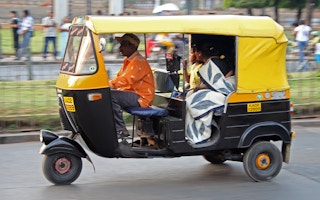Imagine you’re buying a car, and the manufacturer forces you to purchase not only the vehicle itself but also demanded you pay upfront for 10 years worth of fuel. About $25,000 for the car and another $50,000 for the gas. Would you still purchase the car? Absolutely not, unless the gasoline was given at a discount price, right?
Anyone shopping for an electric car could be forgiven for thinking that manufacturers are asking to pay upfront for future energy use. These vehicles are still on average about 35 per cent more expensive than non-electric cars— despite gradually declining battery prices and the promise of practically zero maintenance fees.
It’s the cost of the battery technology that pumps up the sticker price. This explains why not many electric cars are being sold in developing countries like India, and people are waiting for battery prices to come down further.
Many Indian cities are among the world’s most polluted, and vehicular pollution is one of the major causes. Having signed and ratified the 2015 Paris Climate Agreement, India is obligated to bring down its share of global greenhouse gas emissions by 2030.
Electric vehicles can be a solution to air pollution, as they can be charged from any power outlet. But they are not seen as the solution yet by the poor because of the prohibitive upfront cost.
This is now an urgent issue in India, where the government is currently drawing up the details of an ambitious plan to promote electric vehicles, including banning the sale of non-electric vehicles by 2030.
“
Electric vehicles can be a solution to air pollution, as they can be charged from any power outlet. But they are not seen as the solution yet by the poor because of the prohibitive upfront cost.
Tenders to procure 10,000 high-performance electric cars have already been announced, and the government is expected to invite bids for 50,000 electric three-wheelers from the original equipment manufacturers by end of this year.
India’s push for electric vehicles is moving forward, but many challenges remain. One of them is the country’s lack of charging infrastructure.
Buying storage as a service
Beyond installing more charging stations, which will be a sure thing once electric cars become mainstream, maybe the short-term solution could be sharing the infrastructure (batteries) rather than building new infrastructure so users can charge their batteries individually.
In 2014, while Indian electric vehicle manufacturer Gayam Motor Works (GMW) was designing and developing electric three-wheelers for a Japanese firm, it became clear to them that the key to electric vehicle adoption in India was to make charging as simple as going to a fuel station.
People don’t want to buy batteries; they want to buy storage as a service. One liter of gasoline delivers the equivalent of 9 kWh of electricity, while an average car battery stores about 30 kWh.
Comparing side by side, the Nissan Leaf electric car has a range of 160 km on a single charge (30 kWh), whereas the non-electric Nissan Maxima needs 15 liters of gasoline (or 135 kWh in electricity) to travel the same 160 km.
However, new generation batteries—lithium-ion and not to lead-acid—are characterised by their relatively high power-to-weight ratio, energy-to-weight ratio, and energy density. Lithium-ion batteries are smaller and lighter as well as more durable and reliable; they reduce the weight and improve the performance of the vehicle.
Over 600,000 electric rickshaws using lead-acid batteries are plying Indian roads today. It takes 8-9 hours for each vehicle to get fully charged, and the batteries must be replaced twice a year.
Existing charging stations are in open parking spaces, and the power is being sourced in an unorganized manner. Several vehicle manufacturers, power companies, and government bodies are looking into how to change this scheme to make it more efficient.
In 2015, GMW India launched the SmartAuto, a new lithium-ion three-wheeler. This model can be fully charged in just 3 hours, has a range of 110 km per charge, reaches a maximum speed of 55 km/h, and can carry about 500 kg in load.
Technology leapfrogging
However, the lack of charging stations was still a problem. So that same year the company came up with India’s first battery swapping system for electric three-wheelers. It enables drivers to swap their vehicle batteries in less than a minute.
The batteries of electric vehicles cost more than those of non-electric ones because of the integrated lithium-ion units. In the swapping model, the manufacturer owns the batteries and charges drivers for the service provided based on the usage. Also, the cost of purchasing an electric three-wheeler without a battery is lower than buying a diesel vehicle.
Finally, to make the system even more environmentally friendly, some of the swapping stations will soon be powered by solar panels. The idea is to set up many across different parts of India in the future.
Does the public agree with this vision? The business-to-business and business-to-government markets are keen, because setting up swapping stations at their hubs and providing the required support is relatively easy.
Three years later, this is no longer utopia – governments around the world are committing to electric cars. Even car manufacturers like Volvo plan to stop making non-electric cars.
ADB technical assistance is supporting clean energy use across Central Asian Regional Economic Cooperation countries, and promotes electric vehicles. GMW India’s experience is helping ADB design an electric three-wheeler pilot for Afghanistan, where many people have only watched television in color, and never seen a telephone without a cord.
Not all countries can afford Teslas. Most poor people in developing Asia can only aspire to own an electric bike or rickshaw. ADB’s hope is to ensure that affordable electric vehicles in the developing countries of this region have the same quality battery as a Tesla.
Technology leapfrogging is the only answer to eliminate the technology divide between the developing and the developed world. What old technology do you plan to leapfrog today?
Sohail Hasnie is Principal Energy Specialist, Central and West Asia Department, ADB.
Raja Gayam is CEO for Gayam Motor Works India.
This piece was published with permission from the Asian Development Bank.










